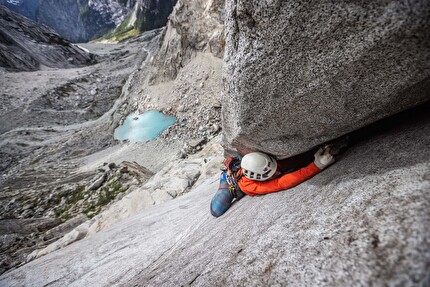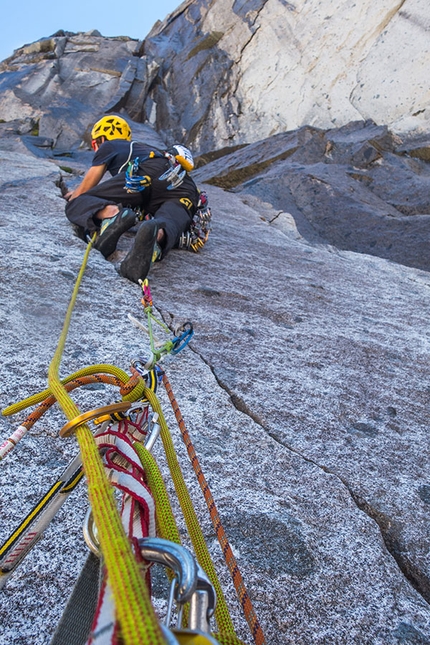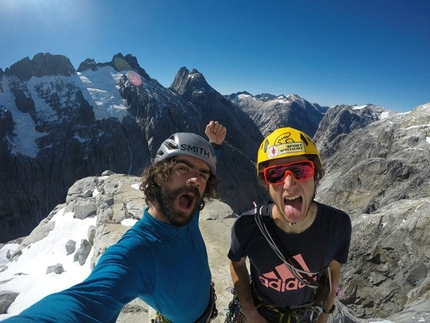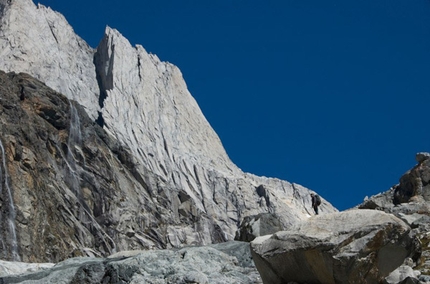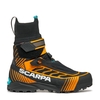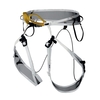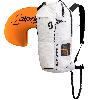New climb on Pirita Central in Turbio Valley (Patagonia) by Flavie Cardinal, Jasper Pankratz
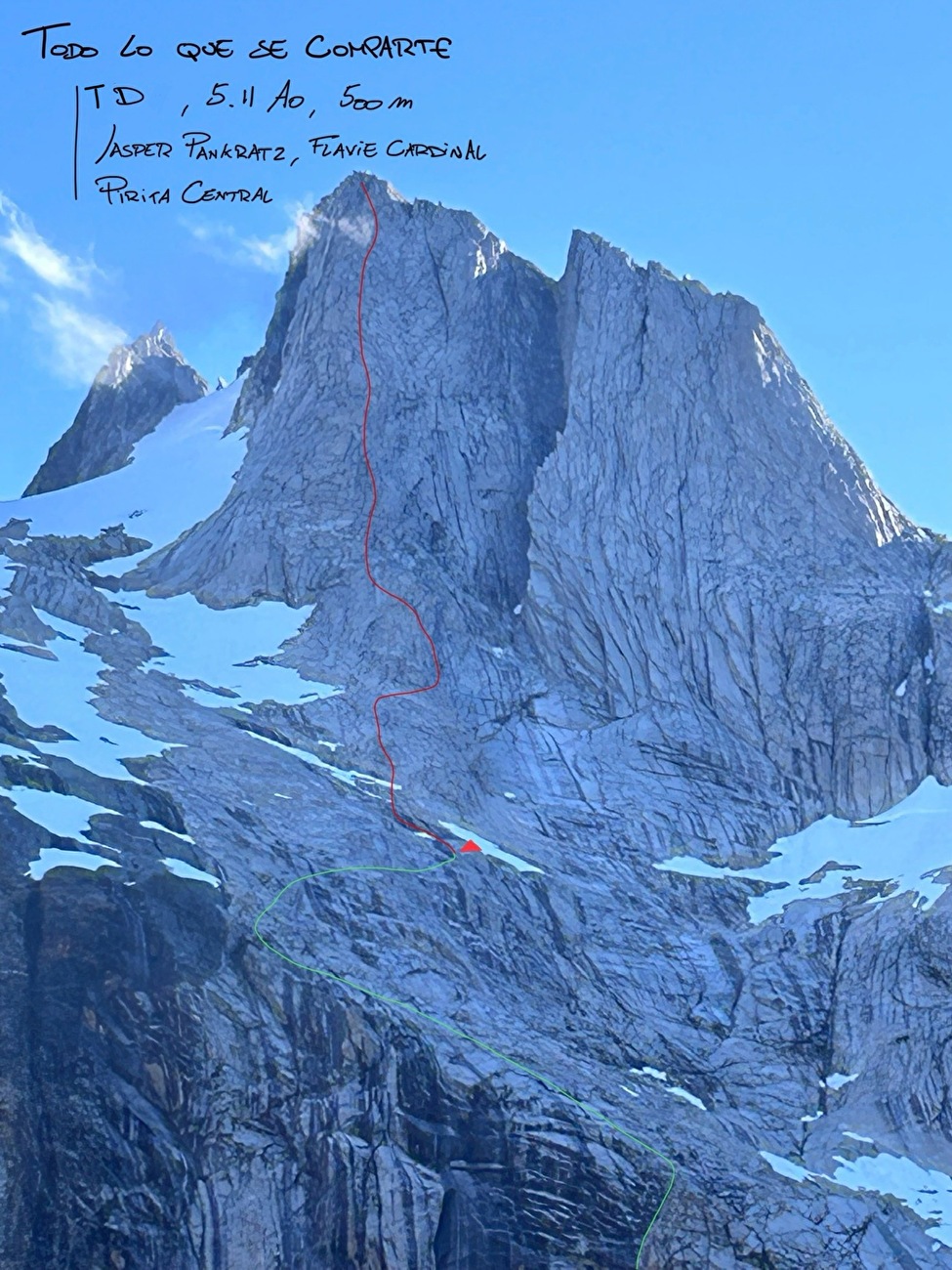
 1 / 9
1 / 9 archive Flavie Cardinal
archive Flavie Cardinal
Our expedition started in Bariloche, Argentina, where we were greeted by Sebastian de la Cruz, a local climber with extensive knowledge of the Turbio Valley. Jasper had been in touch with him for several months, and his help was crucial to our planning. Sebastian welcomed us into his home, treated us to a warm meal, and provided us with a hand-drawn map of the valley — a guide that would prove indispensable throughout our journey.
On January 8, Sebastian drove us to El Desemboque, where we would cross Lago Puelo by boat. On January 9, we met our gaucho Lajuan, son of Gabi and Mariano, who was accompanied by five horses: two for us and three for our gear. The first leg of the journey covered 40 kilometers, with a stop halfway at Lajuan’s family home for lunch. We were warmly welcomed by his parents, who treated us to homemade cheese, pickles, cakes, kombucha, and maté. The hospitality was overwhelming, and the food far exceeded our expectations.
The following day, we rode another 20 kilometers to reach Don Ropo, the first of two refugios. There, we bid farewell to Lajuan and Mariano and were greeted by Osvaldo, the refugio host for the summer. Once again, we were taken aback by Osvaldo’s generosity. Despite having packed lunch, he insisted on cooking for us, and his meal — far superior to our soggy tuna wraps — was a welcome comfort after a long day.
Base Camp and the Start of the Climb
After leaving Osvaldo and the comforts of the refugio, we began the tough task of carrying our gear on foot. It took us three days of relaying gear across two tyroleans and through rugged terrain. Finally, we reached Don Chule Refugio, where we set up base camp in the Mariposa Valley. This valley, adjacent to the Piritas Valley, had a few previously climbed routes and became our initial playground. Our first objective was to climb El Palito on La Oreja, while exploring possible variations linking the climb to the summit.
On our first day, we successfully climbed La Oreja. From a large ledge system atop pitch 7, we spotted a potential continuation. However, after trying a few more pitches, we quickly realized that the cracks were heavily vegetated and would require extensive cleaning to free-climb.
The Piritas Central Mission
On January 14, we got our first weather window, which provided a chance to tackle our main objective: a new route on Piritas Central, located in the Piritas Massif. This alpine face had seen little activity, with the last known ascent occurring back in 2016. The approach was tough, requiring an arduous eight-hour bushwhack, including multiple waist-deep river crossings.
After setting up an open bivy at the base of the massif, we began the climb the following day. The initial slabs went smoothly, and we gained around 1,500 feet, navigating terrain with pitches up to 5.11. However, as we neared the headwall, the rock quality deteriorated. We found ourselves stuck on poor-quality cracks and loose granite. After approximately 300 meters of challenging climbing, we encountered rotten crack systems, just 200 meters from the summit. Despite several attempts to find an alternative route, we realized retreating was our best option.
With bad weather rolling in, we rappelled down to a large ledge system and began our descent, already making plans to return.
The Return Attempt and Success
A few days later, we caught another weather window. This time, the forecast promised a shorter break in the rain. We hiked in under drizzle, but with our newfound experience, we shaved hours off the approach, reaching the base in just five hours. On January 24, we began the climb again, tackling the slabs quickly under light rain that was expected to stop in the afternoon.
By 2 PM, we had reached the base of the headwall. I started climbing the first pitch, hoping to fix some for the next day. However, heavy rain and hail forced me to retreat, and we set up an early bivy. Unfortunately, the rain didn't let up, and by 3 PM, our bivy bag was soaked — along with our down sleeping bags. We huddled together for warmth, using Nalgene bottles filled with hot water, praying for the weather to clear.
Miraculously, by dawn, the sky cleared, and our morale soared. We started climbing at 6 AM, opting for a new line left of our previous attempt. The rock quality was noticeably better, with a continuous crack system that made for excellent climbing. Over the next 14 pitches, we encountered everything from tricky slabs to stunning dihedrals and splitter finger cracks. The crux came on a beautiful stemming dihedral, where we had to tension traverse into the next crack — the only aid move of the entire route (A0).
By late afternoon, we reached the summit, just as another storm rolled in. We rappelled down to a safer station, which we had established during our earlier attempt, speeding up our descent. We made it back to the base just as the storm hit, grateful for the perfect timing.
The Final Stretch
After a much-needed rest, we packed up camp and hiked back to Don Ropo, where we shared one final meal with Osvaldo. The last leg of our journey involved a 45-kilometers paddle down the Río Turbio to Lago Puelo. Paddling through this scenic valley was a joyful and reflective experience, offering the perfect end to our incredible adventure in the heart of Patagonia.
Our route, Todo lo que se Comparte, was a tribute to the generosity we encountered throughout our journey.
- Flavie Cardinal



 Copia link
Copia link


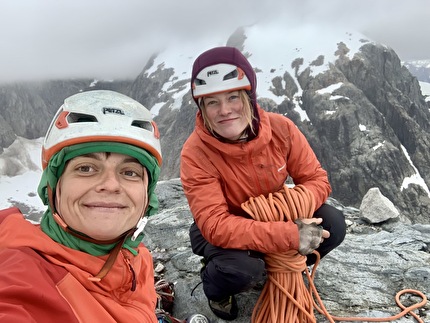
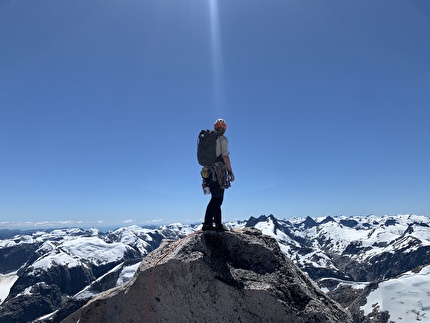
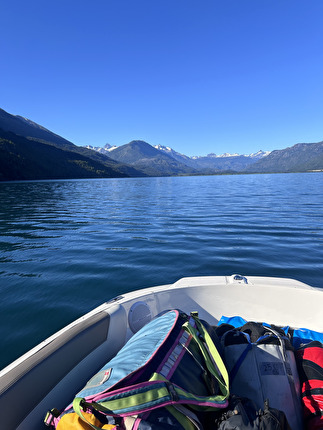
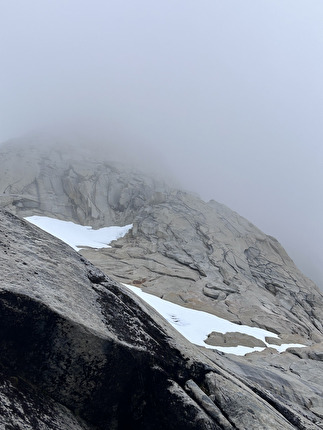
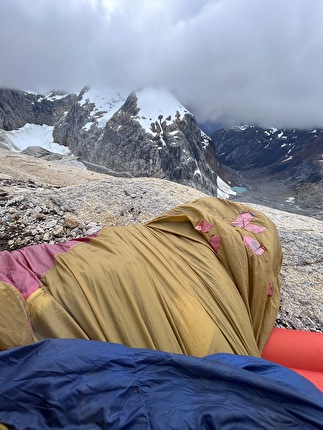
 See all photos
See all photos